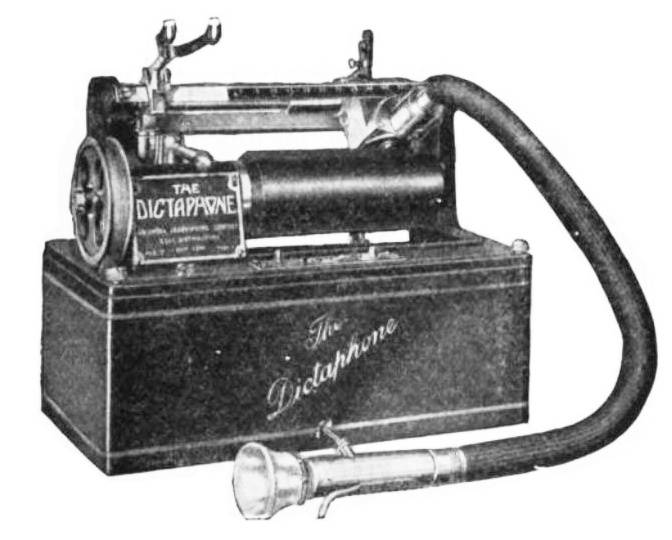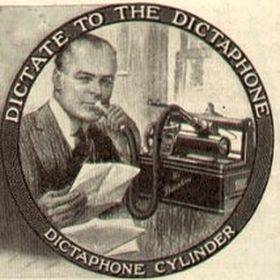History of Dictaphone
Since the creation of first sound recording, scientist, technicians and engineers all around the world strived to create dictation devices -machines that are used for recording speech for needs of future transcribing or for playback. As technologies advanced through the decades, new and more refined versions of these devices appeared on the market, managing to find their way not only to the common user but to the many professional environments, from the medical facilities, boardrooms, public telephone services (police, hospitals) and many more.
First Dictaphone machine was created only few years after Thomas Edison created his first phonograph recording device. Seeing that his cylindrical tinfoil storage medium provides little in terms of usability and sound quality, his greatest rival Alexander Graham Bell created much more user friendly wax cylinders which provided much better sound and easier manufacture. As a test sample of this new technology, Bell and his manufacturing Volta Laboratory created a "Volta Graphophone Company", which was responsible for promoting a first dictaphone to the general public. In the following years Bell and Edison tied to secure the market with their devices, but in the end reusable wax cylinders that appeared during late 1980s proved to be the reason for the success of dictaphone. By 1907, the name Dictaphone became so successful that it became synonym for all recording devices of similar use, even though Edison tried to regain the dominance with his own " Ediphone".

During the following 100 hundred years, Bells dictaphone company changed owners over 10 times, and improved their recording tech with the accordance to the available technology. Between early 1900s and 1950s, wax cylinder Dictaphones continued to lose their significant weight, and improve their capacity of recording longer sessions. As the more manufacturers entered into competition, and the need for finding new technology for the military use in World War 2, magnetic tape entered into the scene as the much more cheaper and reliable way of storing sound data. During 1950s many types speech recording devices were made, most notably ones that could record significantly longer sessions than the general recorders. Arrival of cassette tapes almost destroyed the Dictaphone industry, but the surviving Dictaphone factory (now under the ownership of Lanier Business Solutions) created its own cassette based dictaphones that were small, portable and had great speech recording capabilities. Late 1970s introduced new standard of Dictaphone magnetic tapes - mini cassettes, micro cassettes and pico cassettes. These smaller sizes of storage medium enabled the manufacturers to create truly small recording devices which were able to record as much as the previous non portable versions. By late 1980s, digital recording brought the latest generation of Dictaphones to the market, which remains the default means of sound recording up to this day.
Some of the most important innovations of Dictaphones without a doubt became their "endless loop" ability (particularly popular in health care community, which demanded strict condition for recording in highly sensitive and potentially dangerous areas) and "multi-channel recorders" (which are even today used by telephone emergency services who monitor calls and transcribe computed speech into text on the fly).
As of 2007, Dictaphone division of original Alexander Bell's company is the part of the Nuance Communications, a multinational computer software and technology corporation that is focused on health-care and medical technologies.


